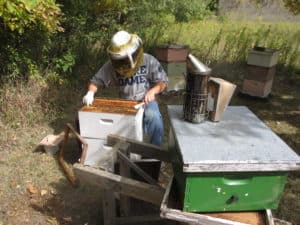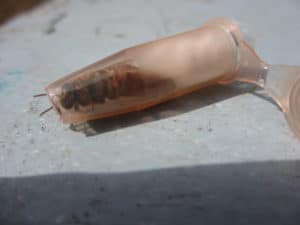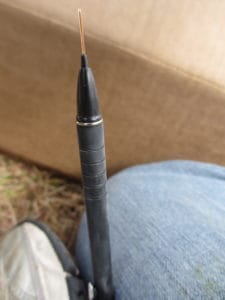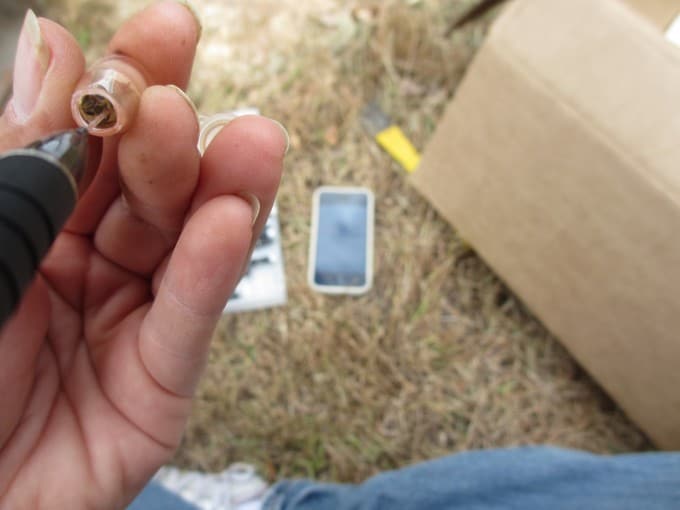
A queen secretes her own combination of chemical scents, like a perfume. The queen’s scent gives the worker bees cues about the hive and the condition of the queen. The scent helps control swarming, it inhibits the development of ovaries in the worker bees, it tells the workers if a queen is mated or not, and it gives workers the cue to gather around the queen and form a retinue to take care of her.
The stronger the queen’s chemical cue, the larger then retinue should be. A smelly queen

could indicate a healthier queens, and therefore a healthier hive. We got an opportunity to test these hypotheses out through a collaboration with a the Social Insects Research Group (SIRG) in the Republic of South Africa. Our objective was to select stronger and weaker colonies, then collect pheromone from the queens and record a video of the retinue behavior.
First, Mike Goblirsch, a PhD student in Dr. Marla Spivak’s lab, rated colonies based on the number of frames of bees, amount of sealed brood, and pattern of the sealed brood (queens normally don’t miss laying eggs in many cells, so a colony that has a really spotty brood pattern often indicates a colony health or queen problem). Eight colonies were in the strong group and eight were in the weaker group. Mike and I went through each of the colonies and found the queen. We then recorded a 60 second video of the queen, so a researcher in South Africa could watch the video and rate the quality of the retinue around the queen.

To rate the quality, the researcher will count the number of bees attending to the queen, and the number of times a bee touches the queen with her antennae, the number of times a bee feeds the queen, and the number of times the queen is groomed.
Last, we collected a sample of the queen’s smell. We carefully took the queen and put her in a small tube with a cotton backing and

collected pheromones from her mandibles. The researchers in South Africa came up with a method of collecting the pheromone with a small silicone tube on the end of a mechanical pencil. You get the queen to bite the tube for 5 mins, then stick the tube into a solution for preservation and analysis of the pheromone levels.
We sent the videos and samples to South Africa and are waiting on the analysis. Should be interesting!
